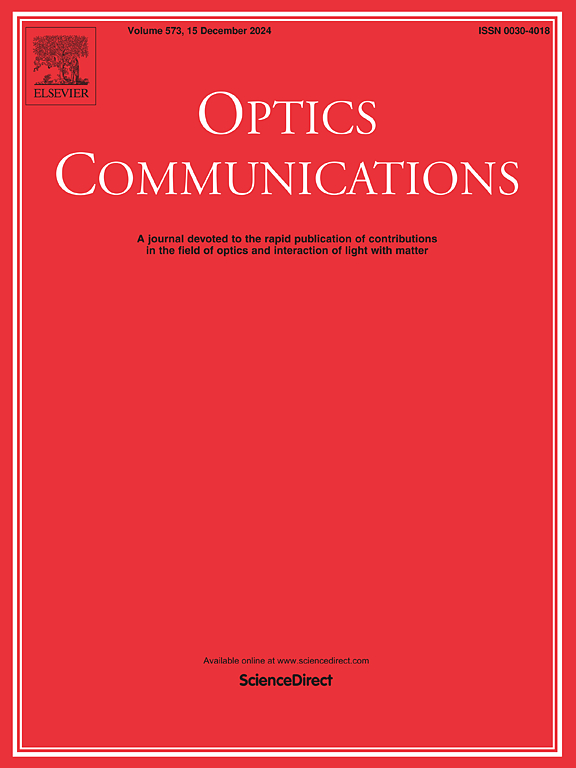Plasmonic Luneburg and Eaton lenses for terahertz spoof surface plasmon polaritons
IF 2.2
3区 物理与天体物理
Q2 OPTICS
引用次数: 0
Abstract
Combining the principle of gradient index optics and spoof surface plasmon polaritons (SSPPs), plasmonic Luneburg and Eaton lenses in the terahertz frequency range are demonstrated and dynamical modulation of SSPPs field is also realized. The lenses are composed of subwavelength metallic pillars. By analyzing the dispersion characteristics of the pillars, the relationship between the effective mode index and the width of the pillars is obtained. The desired index distribution of the lenses can be achieved by arranging metallic pillars with different widths. For the Luneburg lens, the SSPPs field can be effectively focused to a point around perimeter of the lens with a bandwidth of 100 GHz. By changing the incident direction of THz beam, the SSPPs fields are imprinted with oblique phases and thus can be dynamically coupled to different waveguides. Conversely, the plasmonic Luneburg lens can transform a SSPPs point source into a SSPPs plane wave. Moreover, because of the spin-dependent spiral phase introduced by the circularly polarized THz beam, the propagation direction can be adjusted by changing the polarization state of the beam. Similarly, plasmonic Eaton lenses are also designed to realize the 30 and 60° bending of the SSPPs plane wave. This study may advance the development of miniaturized THz devices and on-chip THz communications.
求助全文
约1分钟内获得全文
求助全文
来源期刊

Optics Communications
物理-光学
CiteScore
5.10
自引率
8.30%
发文量
681
审稿时长
38 days
期刊介绍:
Optics Communications invites original and timely contributions containing new results in various fields of optics and photonics. The journal considers theoretical and experimental research in areas ranging from the fundamental properties of light to technological applications. Topics covered include classical and quantum optics, optical physics and light-matter interactions, lasers, imaging, guided-wave optics and optical information processing. Manuscripts should offer clear evidence of novelty and significance. Papers concentrating on mathematical and computational issues, with limited connection to optics, are not suitable for publication in the Journal. Similarly, small technical advances, or papers concerned only with engineering applications or issues of materials science fall outside the journal scope.
 求助内容:
求助内容: 应助结果提醒方式:
应助结果提醒方式:


